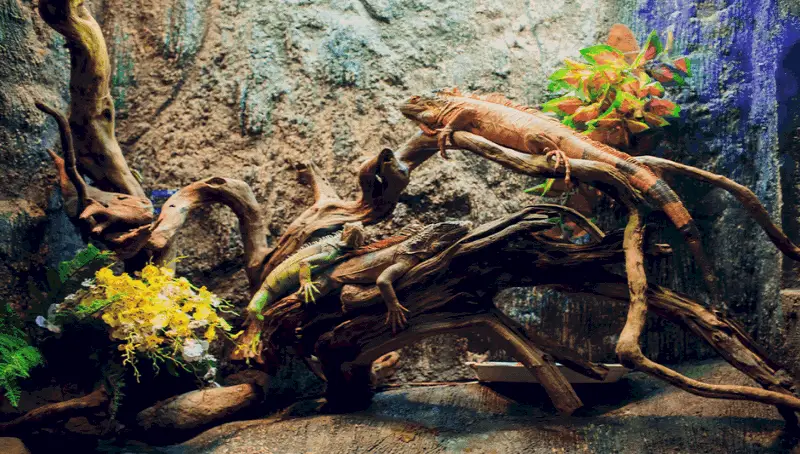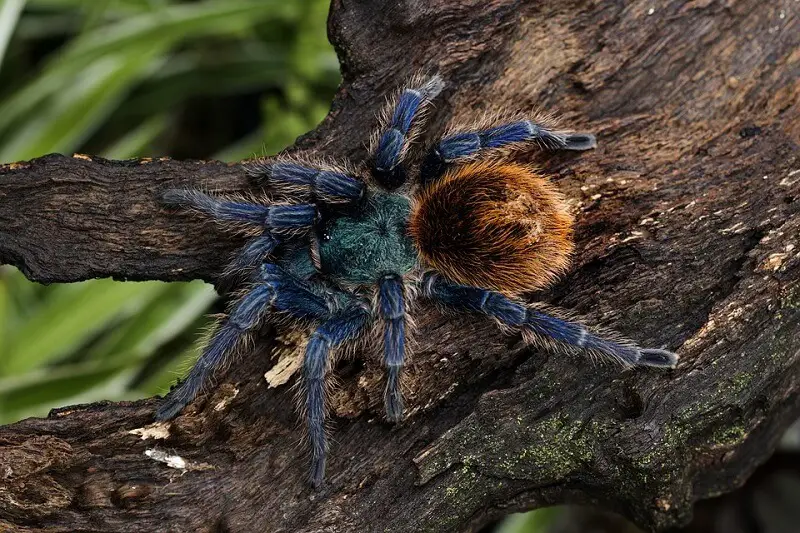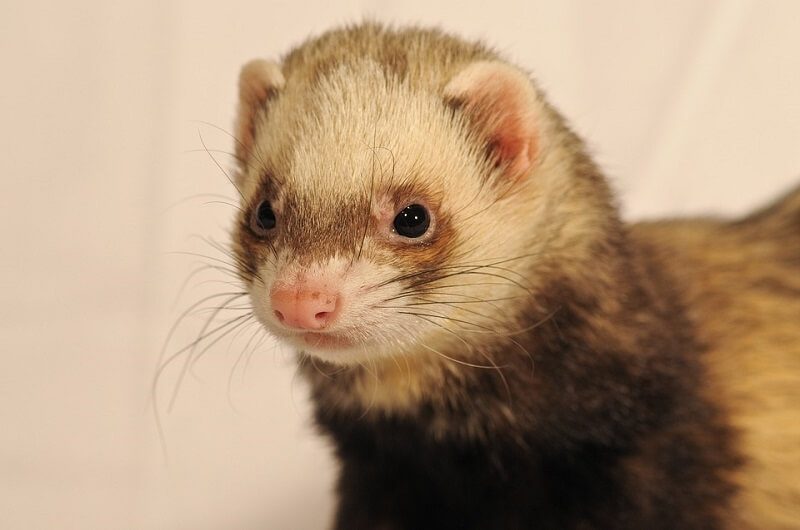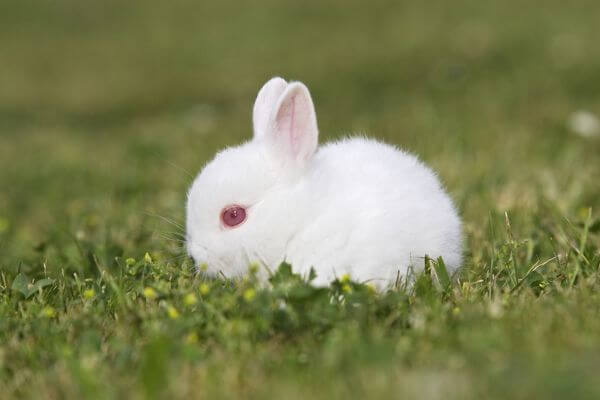Sometimes, when people set up a terrarium, they want to create a mini ecosystem and add a mixture of species that will coexist in the terrarium. While in theory, this seems to be a good idea, in reality, it is a difficult situation and can only be achieved with a lot of research and work. For the beginner holder of reptiles and amphibians, it is not something I`d recommend.
The most popular terrarium animals
Almost all terrarium animals are cold-blooded, meaning their body temperature is influenced by the surrounding temperature and exposure to sunlight. Animals regulate their own body temperature by going to colder or warmer areas and staying there as long as needed. Only through this regulation the metabolism and digestive system can function optimally. Therefore, you need to make sure that the terrarium is arranged as adequately as possible and that the climate is as good as possible when caring for and hosting the animals.
Reptiles as terrarium animals
Reptiles, from the Latin reptilis = “creeping”, are a class of vertebrates at the transition between the lower and upper vertebrates. They are characterized by a long tail, a lizard-like appearance, and thin corny scales that cover their body. Unlike amphibians, they hatch or are born. They do not have a larval stage. Popular reptiles for keeping in a terrarium include:
- Boas, tiger pythons/ball
- Corn snakes, earth snakes, or king snakes
- Water dragons, bearded dragons
- Leopard geckos, lizards, chameleons, anole
- Barbed or thorny-tailed iguanas
- Leopard turtle or Greek turtle
Amphibians as terrarium animals
Amphibians form the oldest class of land vertebrates in history. The name of this category is derived from the Greek “amphibious” which means “double-lived”. Amphibians have a larval stage in the water and live on land only after the metamorphosis from gill to lung breathing ends. But they also need a lot of moisture on land so they can absorb oxygen and water through the skin. Therefore, there should be a high level of humidity in the terrarium. The most popular amphibians for keeping in a terrarium are:
- Tree frogs or poisonous arrow frogs
- Toads
Insects and arachnids as terrarium animals
Insects and arachnids belong to the family of arthropods, the animal branch richest in species. Over a million species belong to it. The following specimens are usually kept in a terrarium:
- Tarantulas (for example, Martinique tarantula, red knee tarantula, golden striped tarantula)
- Scorpions
- Locusts (e.g., stick insects, phantom locusts)
- Praying Mantises
Different requirements for each terrarium pet species
Different species have different requirements, even though the differences seem quite minor. In the wild, each species occupies a unique niche even within the same general climate, where temperature, light, and humidity vary according to the specific habitat of each species, e.g., tree versus on land, land versus water.
In an unnatural situation, like a terrarium, it is difficult to provide an environment that closely mimics the natural environment necessary to maintain a single species healthily and stress-free. Ensuring the natural conditions for several species is extremely complicated, even if they come from the same area.
Types of terrariums
You might also like my articles about:
- How to set up a tarantula habitat
- What do praying mantises eat
- Whether turtles are reptiles or amphibians
Depending on the type of pet kept in a terrarium, it may be necessary to keep it in a desert, tropical forest, or even in an aquatic terrarium. You should create a natural habitat for your animals as close to nature as possible so that they stay healthy and feel at home with you.
Desert terrarium
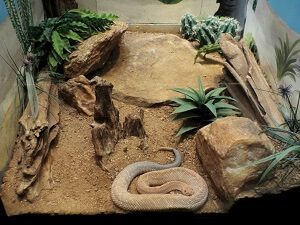 Desert or savanna animals are kept in desert-type or dry terrariums. Depending on the animal, the temperature in the desert terrarium is around 28 to 32 degrees during the day, up to 38 degrees at certain points, and 20 to 22 degrees at night with a humidity of 45 to 60%. The substrate, the design of the back wall, and decore should be adapted to the respective animal.
Desert or savanna animals are kept in desert-type or dry terrariums. Depending on the animal, the temperature in the desert terrarium is around 28 to 32 degrees during the day, up to 38 degrees at certain points, and 20 to 22 degrees at night with a humidity of 45 to 60%. The substrate, the design of the back wall, and decore should be adapted to the respective animal.
Tropical forest terrarium
Animals and plants from wet tropical areas are kept in tropical forests or tropical terrariums. Depending on the inhabitant, the temperature in the tropical forest terrarium should be about 20 to 30 degrees during the day, with a humidity of 80 to 90%, and at night 20 to 22 degrees, with a humidity of 100%. The substrate, the design of the back wall, and the decor should approach the natural environment of the respective animal and be adapted to its needs.
Aquaterrarium
This type of terrarium is basically a combination of a terrarium with a tropical forest and an aquarium. An aqua terrarium is perfect for keeping and caring for turtles due to its high-water content.
When configuring and maintaining the water section, you should follow the instructions for the care of the aquarium. When it comes to technology, in addition to equipping the aquarium with a rainforest climate, you also need an aquarium heater and an external filter.
A larger terrarium is required
Terrariums for mixed species must be much larger than those for a single species, and keep in mind that they are also more difficult to maintain. The additional room is necessary to ensure the environmental conditions and appropriate decor for each species, as well as to allow each species its own space to hunt and interact somewhat naturally. Crowding different species together in a small container can be a recipe for disaster.
Hunting
Carnivorous species are not usually picky with what they eat and will try to eat their smaller co-habitants of any species. This also applies to animals that are mostly insectivorous like lizards, frogs, and salamanders. Most of them will not hesitate to hunt other small animals, having the opportunity, especially if they are locked in a tank with them. Also consider the stress you put on an animal, limiting it in the vicinity of a potential predator.
Stress and struggle
Animals may become stressed by unexpected behaviors and manifestations that they do not know how to interpret. Among species that do not normally coexist, normal behaviors and benign displays can be misinterpreted and this can lead to struggle or stress.
Parasites and diseases
Animals from different areas or habitats have different immunities to parasites and infectious diseases. Therefore, a species can harbor a virus that it can carry without negative effects. However, if this virus, parasite, or bacteria is introduced to a species without natural immunity, the result can be devastating.
Toxicity
Toxicity can be a problem with some frogs, salamanders, and tritons. Many animals secrete light toxins through their skin. These toxins may not be dangerous to humans, but they can accumulate in a tank and cause problems if they are absorbed through the skin of other aquarium inhabitants or if an animal tries to eat a toxic amphibian.
Final Words! A single species in a terrarium is the best choice
There are people who have mixed terrariums that seem to work very well, but it is best to stick to one species per tank. The results of mixing reptile and amphibian species in a terrarium are unpredictable, especially for less experienced owners. Ensuring an adequate environment and mitigating stress is very important for the health and well-being of reptiles and amphibians to risk mixing species.
